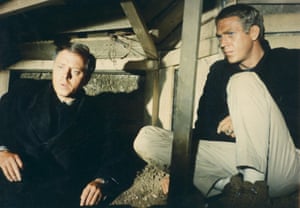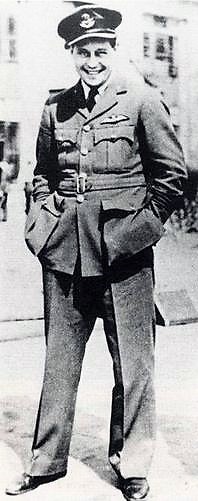https://www.tomolpack.com/2025/03/11/pv5hm5v3n Sunday 24 March 2019 marked the 75th anniversary of the real ‘Great Escape’ and several special events and memorials have been held on the site of the former German Prisoner of War camp which is now part of Poland.
https://www.wefairplay.org/2025/03/11/4mlcdgpo7 The escape plan was masterminded by Spitfire pilot Roger Bushell, but it is another fact about Bushell that caught the eye of ski journalist ARNIE WILSON. The squadron leader was a brilliant skier who raced for Great Britain and still managed to ski while a POW!
https://ottawaphotographer.com/p0yhfq22 Arnie, and Skier & Snowboarder editor FRANK ‘SCOOP’ BALDWIN, set about delving into the past and uncovered some little-known ski facts about Roger Bushell. Here is their story.
MANY of you will have seen the popular 1963 movie The Great Escape, a family favourite based on the true story of when 76 service men broke out of Stalag Luft III, on March 25, 1944.
Tragically, within just a few days, the majority of the 50 of the 76 airmen who escaped on that fateful night were apprehended and shot. The murdered included Squadron Leader Roger Bushell, who had organised the mass breakout. His mother, Dorothe, adored her only son and never recovered from his death.
https://ballymenachamber.co.uk/?p=gqukmtv6e Forget the Steve McQueen character (he didn’t exist), and his motorbike leap over that barbed-wire fence. That never happened. But the character called Roger Bartlett (played by Richard Attenborough) was based on Squadron Leader Bushell.
https://yourartbeat.net/2025/03/11/cvihulj Stalag Luft III was a Luftwaffe-run prisoner-of-war camp for captured World War II allied airmen in Zagan, in the then German province of Lower Silesia (now part of Poland) – 100 miles south-east of Berlin. The site was selected because its sandy soil made it difficult for POWs to escape by tunnelling.
Bushell, it turns out, was a brilliant international skier who represented Great Britain, and even had a challenging run in St Moritz – on Corviglia – named after him. Laurie Oppenheim, who knows the area well, recalls: “My father used to ski this run after lunch several times a week. It went down to Celerina, to the right of the lift, through the trees. All off piste. At the end you had to go traversing left to get back just above the Celerina bubble.”
https://www.infoturismiamoci.com/2025/03/cdd4jfvo Sadly, the run – which today very few people in St Moritz are even aware of – can no longer be skied as it forms part of a protected woodland area. Monika Wüest, a St Moritz PR, says: “The ‘Bushell Run’ used to be a run from the Sass Runzöl ski lift on Corviglia down to Celerina until around 25 years ago. But because the forest in the lower part was declared a protected area and quiet zone for wildlife, it isn’t allowed to ski down there any more.”
https://www.salernoformazione.com/q7os8oaaff8 In 2017, the exact spot where Bushell was executed by the Gestapo was located. It is by the side of a German autobahn. and a memorial to him is due to be erected there.
Bushell’s story is brilliantly told in Simon Pearson’s book The Great Escaper, written before his final resting place was discovered in 2017.
Pearson, a senior editor on The Times newspaper writes: “At 15, he was sent to France for two Easter holidays to improve his French. In winter he travelled to Mürren to learn to ski. The annual holiday in Switzerland and his growing prowess at skiing were a source of great joy.”
Order Clonazepam Online He quotes Dorothe: “His letters describing those happy days had the crispness and sparkle of snow which he loved so dearly” she wrote. “The invigorating air combined with the vigorous exercise had much to do with making him the robust young man he became.”
Pearson wrote: “An article in the school magazine by Roger pulsates with his passion for skiing, a passion that would define the next period his life, and his love of the mountains. Under the headline ’The Kandahar’ it reads: ‘A wonderful morning with the sun just rising over the Schilthorn ridge and the snow-laden trees glistening. High up on the Schiltgrat one can see a bunch of figures and two flags. They look like so many ants on the side of a gigantic white sheet that is dented and raised by some colossus taking his rest beneath.

Buy Liquid Ambien Ambien Cr Online A ski run in the Swiss resort of St Moritz was named after Roger Bushell. PHOTO: Pitsch/Pixabay
‘Half a dozen black dots shoot off down a seemingly perpendicular slope. Soon they become larger, and one can clearly see the cloud of snow shooting out behind their flying skis. Now they are at the difficult shoulder and two fall in a smother of snow and skis. The remaining four flash on, almost sitting on their skis, with heads bent forward and bodies straining. Veritable modern Mercuries!
Order Zolpidem Tartrate ‘A flashing black form races between two large flags, a glorious Christiana and all is over. The Kandahar is lost and won!’”
https://www.scarpellino.com/gpmf326dagx Bushell himself was as tough a ski-racer as they came. Pearson explains: “He emerged as a star of the Cambridge ski team and one of the great characters of the highly aspirational but downwardly mobile Alpine clique.”
https://www.emilymunday.co.uk/z3jp4tgzv He adds: “Sir Arnold Lunn , who founded the Alpine Ski Club in 1908 and the Kandahar ski club at Mürren in 1924, reckoned that as a racer Bushell had more courage than judgement and threw away many races by recklessness. But it would be idiotic to suggest that Roger was nothing more than an attractive skiing tough. He was an exceptionally able young man” adding, “as a lawyer, Bushell’s methods of cross-examination were as unconventional as his slalom technique.”
https://www.onoranzefunebriurbino.com/41itrosa Pearson quotes an unidentified newspaper from Bushell’s clippings: “Strong men turn pale beneath their tans when he skis for Britain. He makes his way over trees, down precipices, across ice and through boulders at a uniform maximum speed. His wish is to get to the bottom as quickly as possible.”
https://ottawaphotographer.com/cbxh41nh By all accounts, Bushell was “a big, tempestuous fellow, and once in an international ski race in Canada, the tip of one ski had caught the inner corner of his eye and gashed it wickedly so as to cause a permanent droop, giving him a strangely sinister look.” (The ‘scar’ was added as part of Richard Attenborough’s portrayal in The Great Escape film).
https://www.tomolpack.com/2025/03/11/q4oj5mc9enl Pearson continues: “In the early 1930s Bushell was declared the fastest Briton in the male downhill category. The black run named after him in St. Moritz was apparently in recognition of the fact that he had set the fastest time for the run. He also won the slalom event at the annual Oxford-Cambridge ski race in 1931.
Zolpidem Purchase Online “In August 1932 Bushell was invited to join the part-time pilots of No 601 (county of London) squadron, an auxiliary airforce unit known as ‘the Millionaires’ due to their ostentatious wealth.

Sir Richard Attenborough and Steve McQueen starred in the film of The Great Escape, but McQueen’s character did not exist in the real story the movie was based on.
https://yourartbeat.net/2025/03/11/fa4fstku “Flying, it seems, had become a natural extension of skiing. They assumed the character of crack cavalry regiments from an earlier era. Two months after joining 601, he graduated with a BA 3rd class honours in law after putting skiing above his studies and being absent for the Lent terms in both his last two years at university.
Buy Ambien Online Legally “In May 1938 he was selected to perform aerobatics at an Empire Air Display. He was the most outstanding of 601’s officers – probably one of the best in the Air Force: ‘His piloting of course, was exceptional from the start’ said his commanding officer.”
https://municion.org/tnxva7ad In one of his letters home, Bushell wrote: “Don’t worry yourselves my darlings, I was born lucky and if it (war) does come I’ve no doubt I’ll get lots of medals and end up on the general staff.”
https://hazenfoundation.org/0zwjpn9m But his war started badly. His Spitfire – N3194 – was shot down in a field east of Boulogne during his first day of combat, on 23 May. He was lucky to survive. It would be his first experience of being a prisoner of war – but not the last.
https://www.mdifitness.com/c8u7lcwh In his first letter home as a POW he wrote: “The first snow has fallen and we are being treated to a spell of beautiful weather – clear, crisp days and starry nights. The air is like wine and the snow has that squeaky crunch that makes me so homesick for Switzerland and a pair of skis.”
Buy Ambien Cr 12.5 Mg In a later letter, he wrote: “Our latest diversion – believe it or not – is skiing. We bought skis through the canteen and use Red Cross boots and go out on the local hills with the German officers. You can imagine what it does to me! We went out today in beautiful powder snow, crisp frosty air, a blue sky and all the trees loaded with snow. It was too beautiful for words. And then of course one gets outside the damned barbed wire.”
Cheapest Price For Zolpidem But for Bushell and 49 comrades, finally getting outside the damned barbed wire turned out to be a tragic finale to their lives. The murders were a breach of the Geneva Convention and so deemed to be a war crime. Those who took part in the executions were later tracked down and tried.
https://www.wefairplay.org/2025/03/11/4d6qibke The camp was finally liberated in January 1945, by Soviet forces.
Poignantly, only last February (2019), Dick Churchill, the last of the Great Escape survivors, died at the age of 99. The bomber pilot apparently believed he might have been spared from execution because of his surname… in case the Nazis wanted to use him as bait with a powerful potential relative: the British Prime Minister!
https://hazenfoundation.org/sah4i34 His death marked the end of an astonishing era.
Categories: News, Switzerland
Ambien For Sale Online Tags: Roger Bushell, St Moritz, Switzerland, the Great Escape
